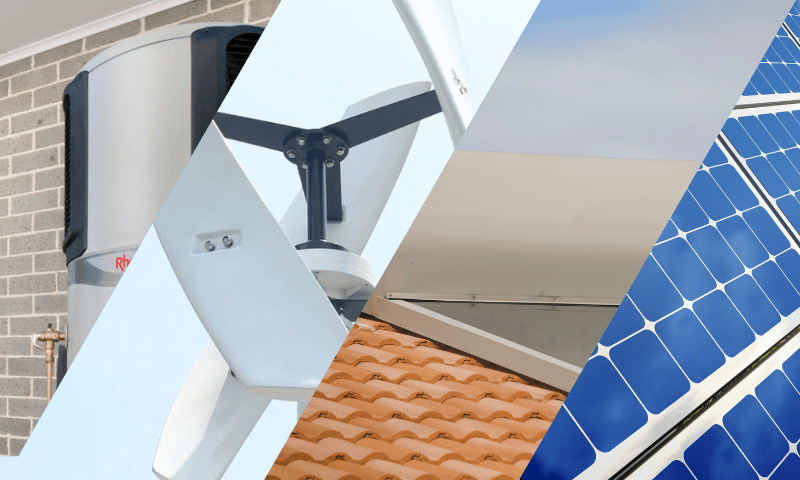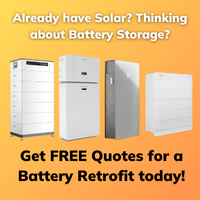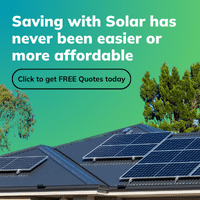
On This Page
Initiated by the Renewable Energy (Electricity) Act 2000; RECs, otherwise known as Renewable Energy Certificates, are available when you buy qualifying solar hot water or heat pump systems, small-scale wind power systems, small-scale hydro systems, or solar PV systems.
You can receive cash back on your purchases by selling the RECs or using them as a point-of-sale discount from your installer.
Renewable Energy Certificates (REC) are also known as solar renewable energy credit, solar credit, green energy certificate, or renewable energy credit.
The Renewable Energy Target (RET) operates by developing a market for RECs. The REC system was originally implemented to encourage an additional 9,500 GWh of renewable energy generation per year by 2010 as part of the Renewable Energy Target (RET). The RET has two components that oversee the implementation and administration of the RECs: Large Scale Renewable Energy Target and Small-scale Renewable Energy Scheme.
Large-Scale Renewable Energy Target (LRET)
The LRET incentivises the development of renewable energy power stations in Australia through a Renewable Energy Certificate Market for the creation and sale of certificates called large-scale generation certificates (LGCs).
The LRET was created to provide incentives for the development of renewable energy power stations across Australia. Large-scale Generation Certificates (LGCs) are generated by these power stations which can then be sold.
The LGCs are sold to:
- Liable entities under the RET (mainly electricity retailers) who are required to buy LGCs from the market and surrender these certificates to the Clean Energy Regulator (CER) on an annual basis.
- Companies and individuals looking to support their claims about reducing emissions, using renewable electricity, or by surrendering offsets such as Australian carbon credit units.
LRET will continue until 2030.
Small-scale Renewable Energy Scheme (SRES)
The SRES administers the Small-scale Technology Certificates (STCs) that are assigned to small-scale renewable energy systems such as residential and small-business solar PV systems, solar hot water systems, heat pump hot water systems, and small-scale hydro and wind systems.
Much the same as the LRET, the SRES incentifies the purchase of small-scale systems by individuals and small-businesses. The STCs generated by the systems purchased and installed are then sold to RET liable entities who are obligated to purchase STCs to offset their emissions.
SRES will continue until 2030.
How do RECs work?
RECs, STCs and LGCs
Renewable Energy Certificates (RECs) is an umbrella term covering or referring to both Small-scale Technology Certificates (STCs) and Large-scale Generation Certificates (LGCs).
How the new Renewable Energy Target works
The Australian federal government implemented a target of 20% renewable energy sourced electricity by 2020. The LRET achieved their 33,000 GWh target in September 2019.
The Renewable Energy Target is designed to encourage investment in new large-scale renewable power stations through the Large-scale Renewable Energy Target, and the installation of new small-scale systems through the Small-scale Renewable Energy Scheme.
- The current RET requires 9500 GWh of renewable energy to be delivered by energy companies
- 1MWh of energy equals 1 REC, so 45,000,000 RECs will be generated to meet the 2020 target
- To meet the target, energy companies must surrender RECs into their holding account at the end of every calendar year at an amount representative of 20% of their market share
- If energy companies don’t put sufficient RECs into the holding account, the company is fined at a rate much higher than the REC value
How much are renewable energy credits worth?
One REC is equivalent to one megawatt hour of electricity generation. A renewable energy certificate can trade for cash and the value of these certificates fluctuates according to market conditions. Essentially, a REC is a form of renewable energy currency.
Each small-scale system will be assigned STCs with the total value taking into account:
The amount you get back from the STC scheme is based on three factors:
- Zoning (where you live)
- STC value (which fluctuates)
- The deeming period (which decreases each year)
Owners of systems can claim RECs themselves by completing the appropriate application forms. However, this can be confusing and time-consuming, so most people choose to assign their right to claim RECs to an installer; which is a very simple process.
By taking advantage of Renewable Energy Certificates, you can save a substantial amount of money when you buy wind and solar power equipment!
Small-scale renewable energy system REC incentive
Renewable energy installers will deduct the total value of a system’s STC allocation as a point of sale discount on all eligible renewable energy systems installed. By offering a point-of-sale discount, the installer can save you the time and hassle of the application process related to the generation of renewable energy certificates.
The environmental implications
There’s been a great deal of criticism that the Renewable Energy Certificate system does not provide substantial reduction in greenhouse gas emissions, and that all it does is allow companies to pay to pollute.
When you install a renewable energy system and sell your RECs (or use their value as a point of sale discount), you are essentially selling the right to own the renewable energy (carbon dioxide emission reduction) delivered from that technology to an energy company who will buy those RECs in order to meet their obligation.
However, it’s very important to bear in mind you are supporting the country to meet the mandated Government targets and helping to support the Australian solar industry. This not only means more green jobs, but increased uptake of solar power drives costs of supply and installation down so that solar can become more competitive with traditional fossil technologies. In a nutshell, more solar-generated electricity = less coal-fired power generation required.
If you choose to retain your RECs by paying full retail price, congratulations! You are in the “ultra-green” zone as you are supporting Australia to go above and beyond the 2020 target!
Australia’s Renewable Energy Certificate system is far from perfect. But it’s a start and is a basis upon which to work and improve from. Without it, solar power would continue to stay out of reach for many, see our industry stagnate, and new development severely impeded.
Now is the right time to switch to Brisbane solar energy. We recommend seeking at least 3 solar quotes to ensure that you are getting the best deal and selecting the right solar installer in Brisbane whom you can trust. With this, you can guarantee a solar system in Brisbane that meets your energy needs.
Contact us and let us discuss the rebates, subsidies, and incentives available to you. Use our free solar quote system to get up to 3 free home and business solar PV system installation quotes from our network of trusted, local installers. Complete our quick quiz and begin your solar journey today!














































